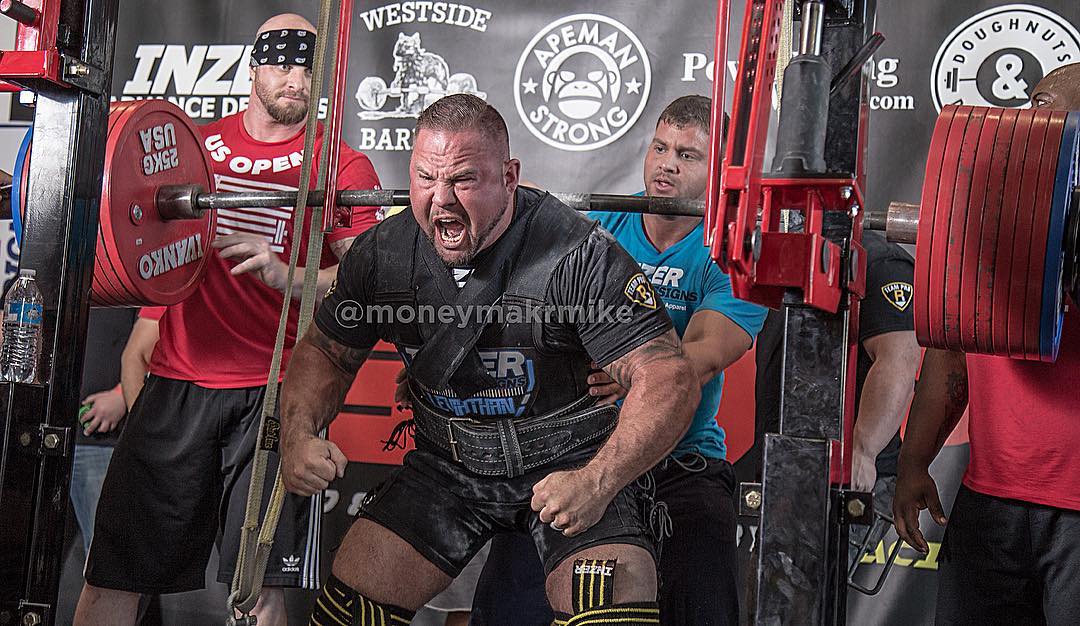
20 May INZER Leviathan Ultra Pro Review: Sizing and Breaking In by Team PRS
It’s been awhile since something truly new has come to the powerlifting market and Inzer Advance Designs has come through in a major way. Want ease of use, a boost in performance AND 100% customizable adjustability? The Leviathan Ultra Pro is the answer! With color combos of your choosing, this suit doesn’t just look the part, it is the part. With TeamPRS hitting PR’s across the board -from Brian Carroll’s multiple squats over 1090 at 242 in it, Byrd’s 1015PR at 275, Marc Tejero’s 800+ at 148 to Beth Thomas’s 500 at 132 – this suit is less than a year old and the proof is in the pudding – don’t get left behind.
As the well-known adage goes, when you think big you’ll have a greater chance of getting what you want. The same is true with your training, diet, competitions and personal equipment results. In the day to day nitty gritty of training and life however we all sometimes find ourselves in less than advantageous situations. It’s every lifter’s worst nightmare; you’ve done a successful weight cut and have made weight, but the next day you step on the scales and you’re several pounds over or under your normal training weight. This means that either your gear is going to be way too tight or way too loose. Either way, it messes with you. You’re either going to struggle to get in and out of your gear, or you’re going to have to crank on other gear pieces to get the most out of your loose fitting gear. Most of us have been on both sides of this if you’ve been competing long enough.
Inzer has come up with the solution. Pictured is the Inzer Leviathan Ultra Pro (LUP). Besides the fact that body weight plays very little in the selection of this squat suit, it is instantly customizable based on what you need it to do. This suit no longer needs to be customized and the break in process is cut extremely short. Prior to the LUP, we’d buy a suit close to our specs. Start the break in process. During the break in process, send it off to be tailored (if you weren’t lucky enough to have someone local that could do it), wait for it to get back and then rinse and repeat several more times. Then, even after all that, if your competition weight fluctuates from training weight, you’re going to have to make more adjustments on meet day that you might not have taken into consideration. The ordinary suits would be a nightmare on competition day if bodyweight had rebounded well above normal. Getting to depth would be next to impossible or on the flipside you’d get no support in the hole.
The LUP can very quickly be taken in on the spot. During the learning process for this suit, you need to figure out where you need it adjusted. Each individual is a bit different. Some need more support up top, so they’ll snug up the top third of the suit to give more upper back support. Others will need more hip support if, for example, they’re super wide squatters. You can tighten down the middle third of the suit into the hip area to give a tremendous amount of tension.
Straight out of the box, within minutes we can have this suit on and ready for attempts. The biggest requirement for this suit is simply for the lifter to be self-aware of how they want it to fit. During the “break in process” (and I use the term loosely because very little is needed) it is the lifter’s responsibility to learn where they need it tight and just how tight is necessary. Getting the suit on is super easy. If everything is already loose, it should just slide right up. Most suits require hanging and you’ll see guys strapped up on bars in the monolifts wiggling out of control trying to get it seated just right. This one slides on with minimal effort, with or without briefs on underneath. From there toss the straps up and proceed to tighten the cords down the sides. Pull the cord locks tight against the body and they’ll hold the tension. As an added precaution you can tie knots against the cords locks to make sure that they stay solidly tight. There’s a tremendous amount of pressure that builds in the squat. While we haven’t had any issues with the cord locks, it never hurts to be extra safe.
While learning the suit and breaking it in, it’s suggested starting with minimal tension through the cords. Working your way up through weights you can go tighter as you deem necessary. I suggest to err on the side of loose to start with as you can tighten up areas to a point that the hips are locked. You can literally tighten the LUP so intensely that you wouldn’t be able to move in it. Where most suits you just would not be able to get them on because they were so tight; this suit makes it really easy to get super tight without really even noticing it. Since it’s already on you while you are tightening it down, it is really easy to go overboard with tension way too soon.
Whether you wear briefs underneath this suit, or not, is irrelevant. You just have to still be mindful of how tight you need the suit and where. Again, as a lifter just be self-aware and vocal. Tell your handler what you need. With the versatility of the suit comes a little bit of variance. Practice and patience eliminates those variables. Is each side the same tension? Is this the appropriate tension for this attempt/weight/percentage/RPE/etc.? The break in process is to assess the tension necessary. As long as the lifter is aware of what they need, then the handler’s experience isn’t as necessary as it would be with knee wraps or bench shirts.
As far as sizing of these suits goes: Inzer recommends:
85-115lbs = Small
115-150lbs = medium
150-185lbs = Large
185-225lbs = XL
225-265lbs = XXL
265-305lbs = 3XL
305-360lbs = 4XL
360-400+lbs = 5XL
To give you what we’ve found to be the most accurate for us:
Brian Carroll: 2XL (down from a 3XL) at 265pounds
Marc Tejero: Small at 150 pounds
Lisa Guggisberg: Small at 114pounds
Zane Geeting: 2XL at 235pounds
Jonathan Byrd: 2XL at 275pounds
Will Kuenzel: XL at 230pounds
Besides these examples from team members I have been able to get lifters ranging from 200lbs up to 250lbs in an XL. When you get towards the edge of the recommended sizes you might run into adjustability issues. I’m teetering on the edge up needing to move up a size.
When it’s all said and done, getting out of it is so easy! It’s easier to leave the suit straps up while getting everything loosened up.
Pull the cord locks back as far as they’ll go and run the slack back up through the suit. Pry the sides apart a bit and repeat down the side for each cord lock. Once you have everything loose, it slides off just as easy as it went on.
As an example, we can get someone in and out of this suit in just over four and half minutes. That’s in and ready for last warm up, or opening attempt. It really is that easy. Its high versatility and ease of use makes it the best suit on the market. Nothing else compares to its support and versatility. Ordinarily you’d see a trade-off between the two, but Inzer has done it right with this suit and it gives you the most versatility of anything on the market with the exceptional quality and support you’ve come to expect from them.
All the above holds true for a suit straight off the rack. With a little time and patience, we can increase its versatility even more. By increasing the number of cord locks, we can micro-manage the areas of tension. This allows seasoned lifters to dial in the suit even more specifically to areas that they might have had tailored on previous suits. These changes are easy to make and don’t take long. Be on the lookout for a video and article demonstrating this. It originally comes with 3 sections per side. With a little patience, we can increase the sections to 5 per side and give the hips a bit more adjustability (more on this in a follow up article). I prefer to have 5 per side. This gives a little more room for tightening sections of the hip. With more sections we can also go tighter. Fewer sections mean fewer locks but you need to apply equal pressure of the lace-cord through each lace loop to keep the cords evenly tight through each and every inch. This is very similar to when you tie shoe laces; every section must be of equal tightness to achieve your preferred fit. These are all things you can do at home and don’t have to send the suit off. It also won’t cost you anything but the price of additional cord locks. A new LUP comes with 2 extra cord-locks in the box.
In making the adjustments, or even trimming the cords, I highly advise not to cut them too short. Cutting them too short and you’re left with just trying to cram your fat ass in it while defeating the purpose of the adjustability. Simply tuck the excess cord into the laced cord and you’re good to go.
To recap:
- Order the suit based on your bodyweight
- The adjustability of it means that you don’t have to account for briefs worn under the suit, unless you are close to the upper ends of weight for that particular size suit.
- Don’t trim the cords too short (it’s suggested to wait 2-3 sessions to find the max length needed)
- Pull the straps up before tightening the cords.
- Be vocal with your handler to help determine how tight it is needed.
- When in doubt, err on the side of loose. Tightening the suit while you are in it is different than getting into a tight suit.
- When tightening the cords, pull down. This maximizes tension and puts the locks in the optimal position to hold the best.
NOTE: when deadlifting in the LUP, we suggest starting without briefs OR a lighter pair to start. MANY PR’s are hit on the deadlift in this suit from Jonathan Byrd’s 735 to make 2500 or Beth Thomas’ 400 dead PR to make 1200 at 132. This suit is great to pull both sumo or conventional in. I suggest starting with looser settings than you would for the squat – as you don’t have weight pushing you down. Pay attention to where you like/ need both of the settings and what feels the best for each and always start where you know it works and tighten or loosen accordingly. Some have chosen to use a white paint pen to mark the cords to keep track of this.
With any suit, it will take time to know where your settings are best for YOU. Again, For the most part this suit is ready to go right out of the box – as there is very little of a break-in period. This is what makes the LUP so cool and unique –you can make it your own from color, to how many adjustable cord locks, how tight and EXACTLY where – and still take it off in less than a minute if you are really good! Make sure to ask and direct your questions to TeamPRS and if we can’t answer your questions – Inzer Advance Designs will. Don’t get left behind, the future is now – your Squat & deadlift PR’s are waiting.
Low Country Strength
Latest posts by Low Country Strength (see all)
- LCS Off Season Week 7, Session 1-3 - February 20, 2019
- LCS Off Season Week 6, Session 1-3 - February 20, 2019
- LCS Off Season Week 5, Session 1-2 - February 20, 2019




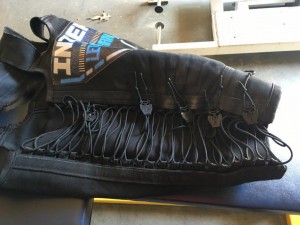
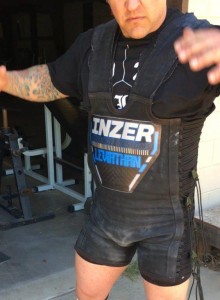
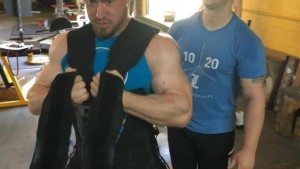
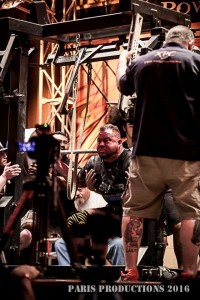
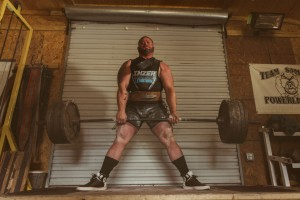

Sorry, the comment form is closed at this time.